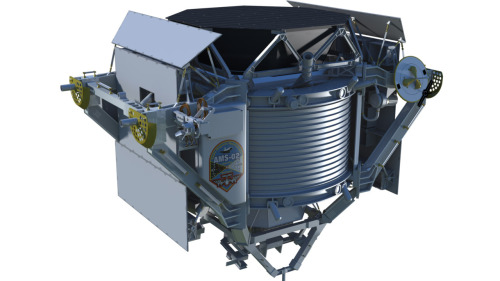First of all a little resume about Solar System formation thoery. Following Kant-Laplace model, our Solar System was born from massive and dense clouds of molecular hydrogen—giant molecular clouds. In this nebula occurs planets formation. In particular theory supposed that giant planets formed on circular and coplanar orbits(3, 5). In this picture, all planets aresubstantially formed in the same position of the actual System. The Nice model suggests that all Solar System objects are formed in a different position and a perturbation in orbits forced the actuall more stable orbits.
The original model's core was developed by Gomes, Morbidelli and Levison in 2004(7)
We study planetary migration in a gas-free disk of planetesimals. In the case of our Solar System we show that Neptune could have had either a damped migration, limited to a few AUs, or a forced migration up to the disk’s edge, depending on the disk's mass density. We also study the possibility of runaway migration of isolated planets in very massive disk, which might be relevant for extra-solar systems. We investigate the problem of the mass depletion of the Kuiper belt in the light of planetary migration and conclude that the belt lost its pristine mass well before that Neptune reached its current position. Therefore, Neptune effectively hit the outer edge of the proto-planetary disk. We also investigate the dynamics of massive planetary embryos embedded in the planetesimal disk. We conclude that the elimination of Earth-mass or Mars-mass embryos originally placed outside the initial location of Neptune also requires the existence of a disk edge near 30AU.In this first paper there's an analytic toy model for migration process. First of all they calculate the variation in time of the semi-major axis $a_P$ of the planet:
\[\frac{\text{d} a_P}{\text{d} t} = \frac{k}{2 \pi} \frac{M(t)}{M_P} \frac{1}{\sqrt{a_P}}\]
where $M(t)$ is the amount of material in orbits that cross the orbit of the planet, $M_P$ the mass of the planet, $k$ a parameter of the distribution of those orbits.
The evolution of $M(t)$ is described by the following equation:
\[\dot M (t) = -\frac{M(t)}{\tau} + 2 \pi a_P |\dot a_P| \sigma (a_P)\]
where $\tau$ is decay time of planetesimals, $\sigma$ the surface density of not yet scattered planetesimals, $\dot a_P$ the planetary migration rate, $\dot M (t)$ the decay of the planetesimal population due to the planetesimal's finite dynamical lifetime.
Sobstituting the first equation in the second, it can obtain:
\[\dot M (t) = \left ( \frac{1}{\tau} + |k| \sqrt{a_P} \frac{\sigma(a_P)}{M_P} \right ) M(t)\]
And the solution of this equation is given by
\[M(t) = M(0) \text{e}^{\alpha t}\]
where
\[\alpha = \frac{1}{\tau} + |k| \sqrt{a_P} \frac{\sigma(a_P)}{M_P}\]
that is time independent.
We can have two different situations: $\alpha$ negative, $\alpha$ positive.
In the first case the migration speed is too low to compensate the loss of planetesimals: the migration mode is called damped migration.
In the second case $M(t)$ grows exponentially, and migration, called forced migration, is self-sustained.
After the giant planets were formed and the circumsolar gaseous nebula was dissipated, the Solar System was composed of the Sun, the planets and a debris disk of small planetesimals.Planets' migration so is caused by the change of angular momentum during the scattering with planetesimals.
Numerical simulations(4) show that Jupiter was forced to move inward, while Saturn, Uranus and Neptune drifted outward.An example of the output produced by Nice simulations is the following plot:







 Comparison of light focusing with a conventional lens and a scattering lens. (a) A plane light wave sent through a normal lens forms a focus. The focal size is determined by the range of angles in the converging beam as and by the refractive index of the medium that the light is propagating in. The microscope image shows a collection of gold spheres as imaged with a commercial high quality oil immersion microscope objective. Inset on left is a photo of an ordinary lens. (b) The scientists send a shaped wave through a scattering layer on top of a high refractive index material. The wave front is carefully shaped so that, after traveling through the layer, it forms a perfectly spherical, converging wave front. The large range of angles contributing to the converging beam, combined with the high refractive index, give rise to a nanometer-sized focal spot. The microscope image shows the same collection of gold spheres as in (a) imaged with the scattering lens. Inset on left is a photo of the lens with the scattering layer on top.
Comparison of light focusing with a conventional lens and a scattering lens. (a) A plane light wave sent through a normal lens forms a focus. The focal size is determined by the range of angles in the converging beam as and by the refractive index of the medium that the light is propagating in. The microscope image shows a collection of gold spheres as imaged with a commercial high quality oil immersion microscope objective. Inset on left is a photo of an ordinary lens. (b) The scientists send a shaped wave through a scattering layer on top of a high refractive index material. The wave front is carefully shaped so that, after traveling through the layer, it forms a perfectly spherical, converging wave front. The large range of angles contributing to the converging beam, combined with the high refractive index, give rise to a nanometer-sized focal spot. The microscope image shows the same collection of gold spheres as in (a) imaged with the scattering lens. Inset on left is a photo of the lens with the scattering layer on top.